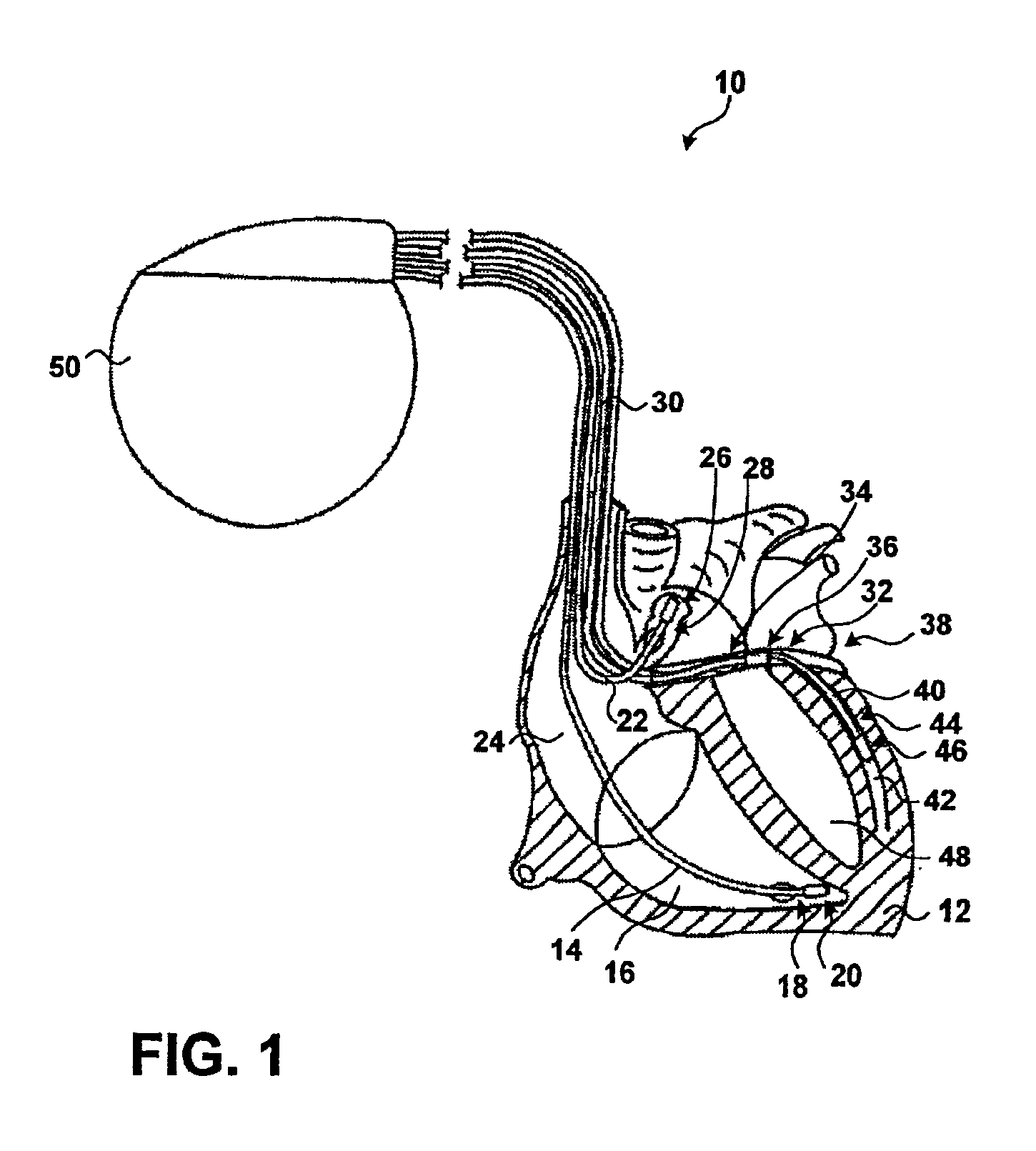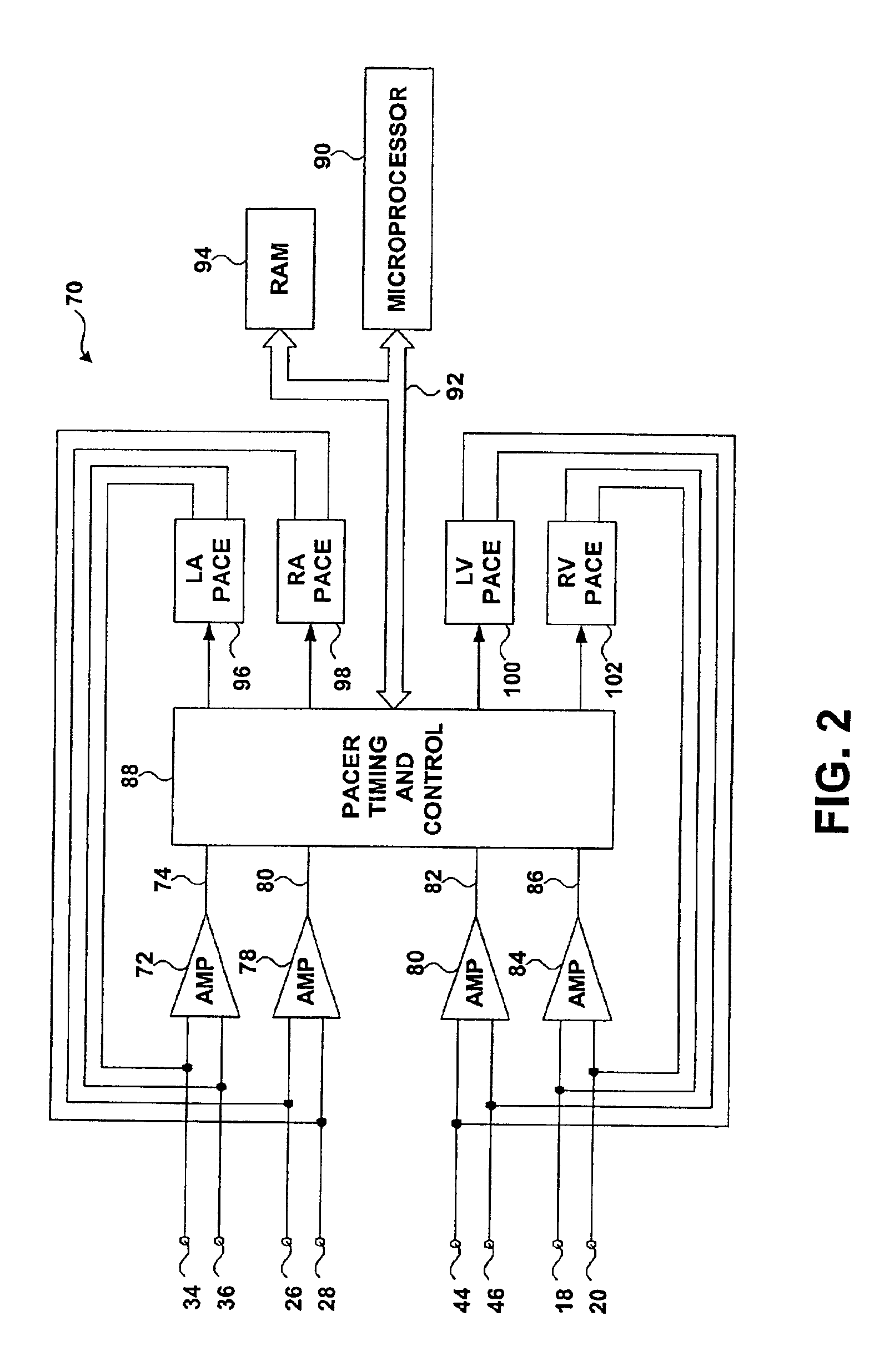Adjustable cardiac resynchronization
a resynchronization and adjustable technology, applied in the field of multi-chamber cardiac pacing systems, can solve the problems of affecting the pacing of the heart, so as to reduce the workload of the heart, reduce the workload, and facilitate the pa
- Summary
- Abstract
- Description
- Claims
- Application Information
AI Technical Summary
Benefits of technology
Problems solved by technology
Method used
Image
Examples
Embodiment Construction
The techniques described below will be presented in the context of cardiac resynchronization to treat ventricular dysynchrony. The invention is not limited, however, to resynchronization of ventricular contractions. The invention may be implemented, for example, to resynchronize atrial contractions.
FIG. 1 is a diagram illustrating an implanted medical device 10 in which the invention may be practiced. Implanted medical device 10, which is shown in conjunction with a human heart 12, comprises a four-chamber pacing system. Right ventricular pacing lead 14 is positioned conventionally in the right ventricle 16 such that its distal end is in the right ventricular apex of heart 12. Right ventricular pacing lead 14 carries bipolar electrodes 18 and 20 that sense electrical signals and can deliver pacing pulses to right ventricle 16.
Right atrial lead 22 is positioned so that its distal end is positioned within the right atrium 24. Right atrial lead 22 carries bipolar electrodes 26 and 28. ...
PUM
 Login to View More
Login to View More Abstract
Description
Claims
Application Information
 Login to View More
Login to View More - R&D
- Intellectual Property
- Life Sciences
- Materials
- Tech Scout
- Unparalleled Data Quality
- Higher Quality Content
- 60% Fewer Hallucinations
Browse by: Latest US Patents, China's latest patents, Technical Efficacy Thesaurus, Application Domain, Technology Topic, Popular Technical Reports.
© 2025 PatSnap. All rights reserved.Legal|Privacy policy|Modern Slavery Act Transparency Statement|Sitemap|About US| Contact US: help@patsnap.com



